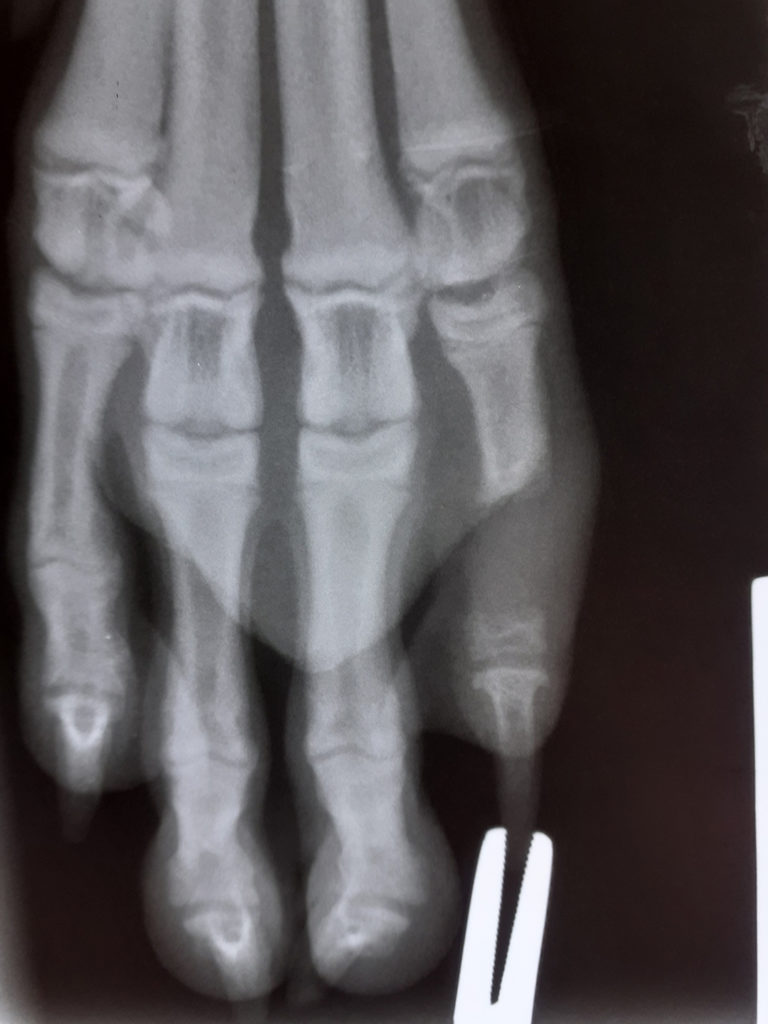
Harriet, a four-month old female greyhound, was presented to the Oxford clinic with the suspicion of a dislocated toe. Greyhound puppies are reared on their mothers until around 10 weeks of age, before being weaned with their litter mates and managed in small paddocks with kennel shelter. This puppy was apparently normal at weaning and was thought to have dislocated her toe while “playing ” with her litter mates in the paddock.
At the time of presentation, the puppy was bright, alert and in good body condition, and no abnormalities with her cardinal signs were detected. The puppy was not lame at the walk, but the fifth toe of the right foreleg was pointing at a strange angle leading to a suspicion of a dislocated toe, and this can be a performance-limiting injury in racing greyhounds if not corrected and managed in a timely fashion.
Examination of the digit revealed an elevation of the third phalanx and abnormal weight distribution through the digital pad. There was suspicion of luxation of the joints between the first and second phalanx as well as the second and third phalanx, and possibly disruption of the deep digital flexor tendon.
The puppy was sedated and radiographs taken which, amazingly, revealed an absence of the second phalanx with reduced bone density of the third phalanx.
